Matador Network's Blog, page 1040
August 6, 2019
Places to see human evolution
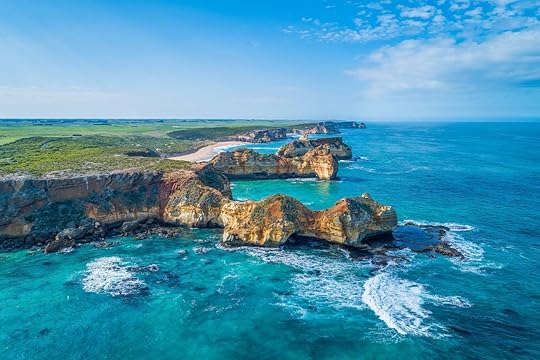
Up until just a few years ago, scientists thought that the human species — Homo sapiens — split off from our hominid ancestors in Ethiopia about 195,000 years ago. We had the notion that some adventurous individuals left the continent 100,000 years later, seeking greener pastures, quite literally, as the region was in a severe drought and resources became scarce. But exciting new evidence is pushing both those dates back way earlier. In huge news for those passionate about evolution, it looks like H. sapiens evolved 300,000 years ago in another part of Africa altogether. Plus, it appears we might have left for Europe much sooner than we ever knew. Here are some places that you can go to learn more about these latest discoveries, as well as the classic finds that have informed our understanding of human evolution.
1. Morocco

Photo: KajzrPhotography/Shutterstock
In 2017, scientists from the Max Planck Institute for Evolutionary Anthropology published articles that truly blew what we knew about human evolution away. They had discovered and analyzed H. sapiens’ skull, bones, teeth, and 300,000-year-old flint blades — in Morocco. Not only do these predate the oldest evidence for humans that we’d ever found by about 100,000 years, but they’re about 3,500 miles from where we’d found them (Omo Kibish in Ethiopia). The site where these earliest remains were found is called Jebel Irhoud, which the Moroccan government declared a site of historical heritage in 2018. For a time, the most complete skull was on display at Rabat Archaeological Museum but the museum appears to be permanently closed. The closest you can now get to the site is by taking a trip to the city of Safi, south of Marrakesh, known for its pottery, seafood, and medina. Go alone, or join a tour group from Marrakesh. You can assume that the people who may well be our very oldest species-mates enjoyed the same sea views.
2. Greece

Photo: Voyagerix/Shutterstock
Scientists recently announced what might be the oldest pieces of a human skull found outside of Africa. If they prove correct, this would indicate a surprisingly ancient journey off the continent and an entirely new lineage of H. sapiens relatives. Found in Apidima Cave on Greece’s southern Mani peninsula, the skull fragments are 210,000 years old, adding some 110,000 years to the story of our exodus from Africa. Scientists still have to extract DNA from the skull to ensure that it is indeed human, but if it is, we’ll be amending our entire migratory history. Casts of the skulls and other important finds from the region are displayed at the Museum of Anthropology of the Medical School of the National and Kapodistrian University of Athens.
3. The Philippines

Photo: Michael Wels/Shutterstock
As with most species, the history of human evolution is like a tree with many twisting branches, not a smooth single trunk. Some of those branches are stubby, representing species that went extinct earlier than others but are still related to the longer, still-growing limbs. It’s really cool when we find one of these fazed-out relatives, like Homo luzonensis, a three-foot-tall ancestor we hadn’t known about before the year 2000. They seem to be exclusively bound to the Philippine island of Luzon, and our evidence comes from the seven-chambered Callao Cave. You can visit the cave easily on your own as it’s one of the most popular tourist attractions in the whole region. If you prefer to take a tour, there are many from which to choose. Scientists are still examining the fossils so they are unavailable for public perusal, but you can still get that magic feeling from imagining what happened there so many years ago.
4. China

Photo: OLOS/Shutterstock
Before archaeologists started to wonder whether the Apidima Cave skull fragments were human, the oldest-known H. sapiens finds outside of Africa were in China. Specifically, the 47 human teeth found at Fuyan Cave in Daoxian County in China’s Hunan Province, which could be up to 120,000 years old — but they’re definitely at least 80,000 years old. Archaeologists know their age because they dated nearby stalagmites that were younger than the teeth. The teeth were found alongside the bones of creatures like hyenas and extinct giant pandas but weren’t associated with any stone tools. That means the animals probably dragged the humans to the cave where their teeth eventually fossilized rather than serving as prey. Fuyan Cave is quite remote and the teeth are being analyzed in a lab, but the mountainous Hunan Province has many rugged caves you can visit to see what these ancient ancestors’ backdrops might have been like so long ago. Yellow Dragon Cave is a travelers’ favorite, reachable from Zhangjiajie Central Bus Station.
5. Israel

Photo: eFesenko/Shutterstock
Israel was one of the first regions that we know H. sapiens settled when we began exploring places outside of Africa. The Skhul and Qafzeh cave remains include anatomically modern humans (not quite behaviorally “us,” but physiologically identical) and evidence for fire and ritual behavior. At these sites, H. sapiens lived alongside Neanderthals for many generations and likely interbred. The Skhul and Qafzeh caves are part of a larger series of UNESCO World Heritage Sites of Human Evolution at Mount Carmel near the city of Haifa. To see the caves, locally known as Wadi el-Mughara Caves, head to the Nahal Me’arot Nature Reserve. There is an interpretive visitor’s center and archaeological, geological, and botanical trails that you can tour at your own pace. Some paths are wheelchair accessible. Adult admission to the reserve is about $8; hours vary but the park is open every day of the week.
6. Ethiopia
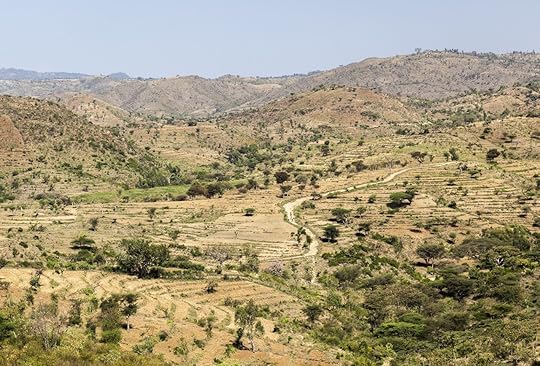
Photo: Ilia Torlin/Shutterstock
What Jacques Cousteau is to exploring the ocean and what Jane Goodall is to understanding chimpanzee behavior, the Leakey family is to unraveling the mysteries of human evolution. The multiple generations of archaeologists have discovered more hominid bones in Africa than all other researchers combined. Every once in a while, usually in January, they or their affiliates will take the general public to their Ethiopia-based sites. But these once-in-a-lifetime trips fill up well in advance, and there are other ways to visit the fossil-rich sites of H. sapiens evolution. Omo Kibish is the site of what used to be the oldest-known evidence for our species (found by Richard Leakey, of course). The fossil outcrop is a UNESCO World Heritage site, protected in Omo National Park. While one of Ethiopia’s largest national parks, it’s challenging to visit and guides are recommended. Note that the fossils are legally protected and cannot be removed.
7. Australia

Photo: Greg Brave/Shutterstock
One of the most controversial and exciting new finds is located just 10 minutes from the main street of Point Ritchie in Warrnambool, Victoria. If the Moyjil site is indeed affiliated with H. sapiens, it means that our species was on Australia more than 60,000 earlier than scientists previously thought. Some archaeologists say they have evidence for fires intentionally set by humans. They also say they found crustacean shells that were discarded by people. (Other scientists say they were strewn by seabirds, but the way the shells were opened is indeed mysterious.) We may never know because the excavation of this landscape would be disrespectful since it’s on Indigenous people’s land. Even still, the Moyjil site represents one of the biggest modern mysteries of human evolution. The Victorian Aboriginal Corporation for Languages offers educational tours of the region, including iconic Tower Hill. From there you might see the geological layers where the archaeologists claim their contentious evidence.
8. France

Photo: thipjang/Shutterstock
The Cro-Magnon cave in the Vézère Valley in France’s Dordogne region has yielded several of the most famous skeletal examples of our species, the eponymous Cro-Magnon Man. These were also some of the earliest H. sapiens ever found, in 1868. The most well-known of the cave finds is a nearly complete skull called Cro-Magnon 1; and while he’s only about 30,000 years old, he has served as a benchmark of what the earliest Europeans looked like. The nearby village of Les Eyzies’ Musée National de Préhistoire focuses on the Cro-Magnon and nearby Neanderthal finds. The Dordogne region is rich with rock shelters like the ones where Cro-Magnon 1 was found, and many of the shelters have incredible rock art as well. You can tour the shelters, but admission is limited to help preserve the paintings. 

More like this: The 7 best destinations for dinosaur nerds
The post 8 destinations to learn more about the origins of humans appeared first on Matador Network.

Gourmet lunch in Mexican cenote

You might think that having a meal underground wouldn’t offer the best scenery, but that’s because you probably haven’t enjoyed lunch in a Mexican cenote before. The Grand Velas Riviera Maya in Playa del Carmen is offering a unique dining experience that takes place 60 feet underground, in a natural limestone water-filled sinkhole created by the collapse of a cave ceiling.
First, you’ll be treated to a private tour of the beautiful Chukum cenote, replete with stalagmites, stalactites, and a surreal underground pool. Next, Maître Cuisinier de France Michel Mustiere, the culinary director of Velas Resorts, will serve you a three-course lunch tailored to suit your personal preferences. The meal will include cheese and charcuterie, duck terrine, and handmade truffles for dessert. The meal will be accompanied by local drinks like bacanora, sotol, tuxca, and pox.
Of course you’ll also be able to take a dip in the magnificent waters of the cenote that has only recently opened to visitors.
The cenotes in Mexico’s Yucatán Peninsula are the result of the impact of the deadly asteroid that wiped out the dinosaurs millions of years ago. While you won’t find any dinosaur bones laying around the Chukum cenote, it’s still a pretty cool place to check out.
Unsurprisingly, the private Gourmet Cenote Experience isn’t cheap. Available for up to eight people, it costs a total of $7,000 and includes transportation to the cenote, taxes, and gratuity. 

More like this: The 8 most amazing, sustainable restaurants in the world
The post Have a gourmet picnic 60 feet underground in a Mexican cenote appeared first on Matador Network.

McDonald’s paper straws

The paper straw trend has been sweeping the world following calls for increased sustainability, but as it turns out, the paper straws used by McDonald’s aren’t exactly doing the environment any favors. Last year in the UK, the fast-food chain replaced millions of single-use plastic straws with paper straws, but according to an internal memo revealed by The Sun, those paper straws can’t actually be recycled and should be “disposed of in general waste until further notice.”
Although the material used to make the paper straws is recyclable, the straw’s thickness makes it too difficult for waste solution providers to process. The reason behind the straws’ thickness is that customers complained that the original paper straws became too soggy in their drinks, Eater reported.
Contrary to the new paper ones, the plastic straws previously used by the fast-food chain were recyclable. 

More like this: 6 steps you can take today to become a zero waste traveler
The post McDonald’s ‘sustainable’ paper straws aren’t actually recyclable appeared first on Matador Network.

How to say mispronounced foods

Reading about a food can be inspiring and an insight into other cultures. It can lead to discovery of new foods and restaurants, perhaps even a new favorite cuisine. There’s one major problem with learning about food solely through reading, though — you’re often left with little idea of how to pronounce any of it.
Avoid the awkwardness of stumbling through an order (or worse, confidently saying a food the wrong way without knowing). These are the correct pronunciations for some of the most commonly mispronounced foods.
1. Açaí berry

Photo: lazyllama/Shutterstock
Commonly mispronounced as: ah-kai
Correct pronunciation: ah-sah-ee
This blueberry-like fruit is originally from Brazil and Peru, and recently enjoyed a swell of popularity in the United States. Açaí is a popular ingredient among the wellness set, though its health benefits are disputed. Near the Amazon River, fresh açaí is a food staple and a main source of nutrition for the people living there. However, in North America, you’ll most commonly find açaí blended into smoothies and sold in bowls with bananas, strawberries, chia seeds, and shredded coconut.
2. Anise

Photo: RHePhoto/Shutterstock
Commonly mispronounced as: anne-is
Correct pronunciation: ah-nees
This licorice-flavored spice (otherwise known as aniseed) is similar to fennel. Anise was first cultivated in Egypt and the Middle East, and is now used widely throughout Europe, the Mediterranean, and Southeast Asia to flavor food and alcoholic drinks. The most popular application of anise is probably in liquor. You’ll find anise in Greek ouzo, French absinthe, and Italian sambuca. It’s found a home in candy, too: Black jelly beans are sometimes flavored with anise, as are chocolate-covered aniseed balls. In the Netherlands, the Dutch sprinkle sugar coated anise over bread for the dessert muisjes. In Mexico, anise is sometimes used to flavor atole, a hot, creamy drink similar to horchata.
3. Bouillon

Photo: sarocha wangdee/Shutterstock
Commonly mispronounced as: boo-lahn
Correct pronunciation: bool-yan
Bouillon is simply French for broth. Dehydrated bouillon, made with vegetables, meat stock, MSG, and salt, is sold in cubes to flavor soups, sauces, and stews. The dry ingredients are mixed into a paste and then molded into cubes. Bouillon cubes come in both beef and chicken varieties, but tend to be high in sodium so seasoned cooks prefer to make their own bouillon. Homemade bouillon requires simmering beef or chicken alongside vegetables like carrots, celery, and onions for at least an entire day. It can then be used as a base for dishes like French onion soup or beef bourguignon.
4. Bruschetta

Photo: Suteren/Shutterstock
Commonly mispronounced as: broo-sheh-tah/bruh-shetta
Correct pronunciation: broo-skeht-ta
This Italian antipasto (appetizer) can be found at almost every Italian restaurant, and it’s a common sight at dinner parties. Laborers originally created bruschetta as a post-work snack that also doubled as the perfect way to make use of stale bread. It’s typically made with round slices of bread that are rubbed with oil, salt, and sometimes garlic. Then come the near infinite combination of possible toppings. The most popular include cured meats, mozzarella, basil, and tomatoes. However, bruschetta is the perfect canvas for the creative. You’ll find bruschetta adorned with honey, peaches, goat cheese, and figs.
It’s important to note that when pronouncing Italian words with two of the same consonants next to each other (see ciabatta and gnocchi, also, below), be sure to pronounce both letters, with a stronger popping emphasis on the first syllable.
5. Cacao

Photo: BestForBest/Shutterstock
Commonly mispronounced as: ca-kay-oh
Correct pronunciation: kah-cow
Cacao, otherwise known as the cocoa bean, is the dried and fermented seed of the cacao tree. Cacao is mostly cultivated in Indonesia, Africa, and Central America. The large pods are broken open and the bitter, nutty pods are removed. The Olmecs in Mexico were most likely the first civilization to domesticate cacao, where it was consumed as a drink mixed with water and chilies, before the cultivation process spread to the Aztec and Mayan peoples. Around this time, the cacao bean was used a form of currency. Cacao seeds can be eaten raw, but of course are most famous as the basis for chocolate. Around 3 million pounds of cacao beans are consumed every year.
6. Ciabatta

Photo: Sevenstock Studio/Shutterstock
Commonly mispronounced as: chia-batta
Correct pronunciation: cha-bhat-ta
Ciabatta is an Italian white bread made with wheat flour, olive oil, salt, and yeast. Though it looks like a rustic bread, it’s actually a relatively new invention. Arnaldo Cavallari, a baker in Verona, first produced ciabatta (batta translates to slipper, so named for the loaf’s broad, flat shape) in 1982 in response to the popularity of French baguettes in Italy. Typically, ciabatta has a light, airy texture and crisp, dense crust.
7. Crudité

Photo: AnastasiaKopa/Shutterstock
Commonly mispronounced as: croo-dite
Correct pronunciation: crew-di-tay
This French appetizer is simple but elegant: Raw sliced or whole vegetables are served plain or alongside a vinaigrette dipping sauce (crudité literally means “rawness”). Crudité platters often consist of cherry tomatoes, celery sticks, carrots, bell peppers, and radishes, and are common at family reunions, office meetings, and birthday parties. While ranch is the most popular dressing for crudité in America, more sophisticated dips include spinach and artichoke dip or hummus. Crudité first surfaced in 20th-century France, and given the ease of both eating and preparation, it quickly spread through the globe as a common snack.
8. Gyro
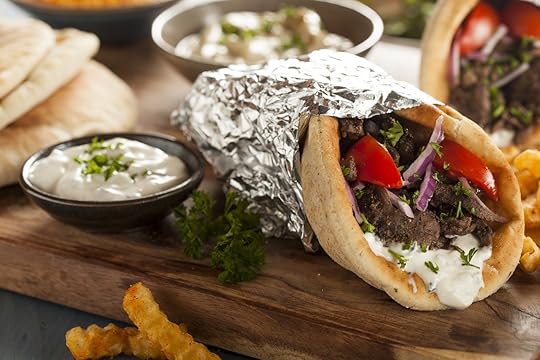
Photo: Brent Hofacker/Shutterstock
Commonly mispronounced as: jai-roh/guy-roh
Correct pronunciation: yee-roh
One of the most popular Greek-American dishes, the history of the gyro goes back to the Turkish doner kebab, a vertical rack of meat from which slices are cut while it cooks. Immigrants brought the dish to Greece, where it was renamed the gyro, made with a block of minced and spiced pork or chicken (rather than slices of meat), and served with tzatziki sauce. By the 1970s, it had become a well-loved fast food in both Greece and the United States (where it’s made with a combination of beef and lamb). Gyros weren’t mass produced until they found their way to Chicago. These days, a gyro is typically served wrapped in pita bread with onions and tomatoes, and includes a side of fries. In Greek, gyro means turn, likely because the meat for this dish is prepared on a rotating vertical spit (also called a “gyro cone”).
9. Gnocchi

Photo: Foto 4440/Shutterstock
Commonly mispronounced as: guh-noh-chi
Correct pronunciation: nyohk-kee
These soft, doughy dumplings are a type of Italian pasta commonly made with potatoes. The finger-sized pasta is pressed with a fork to create indentations that hold sauces like brown butter sage or pesto. Though the history of gnocchi is a little mysterious (flour versions probably first emerged during the Renaissance, in the 16th century), some speculate that the name comes from the word nocca, meaning knuckle.
10. Lychee

Photo: Poring Studio/Shutterstock
Commonly mispronounced as: lee-chee
Correct pronunciation: lai-chee
This sweet, bulbous fruit is native to China and has a tough, spiky red shell. Once unburdened of its outer layer, the fragile lychee has an almost transparent skin and contains a black seed about the size of an olive. Lychee has been popular since at least Imperial China’s Song dynasty (960-1279). Now, lychee is grown in the United States, Africa, and South America. Lychee gained a reputation in the United States as a common flavor for tea and cocktails like Martinis, Mimosas, and Mojitos. The flavor is distinctly tart and floral, and is often compared to rose water and pears.
11. Mascarpone

Photo: vasanty/Shutterstock
Commonly mispronounced as: mars-car-pony/mars-car-pone
Correct pronunciation: mas-car-po-nay
This part savory, part sweet Italian cream cheese is made with heavy cream and either vinegar or lemon juice. Mascarpone is famous as the creamy layers in tiramisu, but it has a wide variety of uses: It can be a topping for pizza, added to pasta sauce, between the layers of lasagna, in cheesecake, or as a dip for fruit. Mascarpone originated in the Lombardy region of Italy in the 16th century, where dairy farmers became well-known for selling their fresh cheese curds. Mascarpone now enjoys P.A.T. status, meaning that no other place on Earth can claim it was invented there.
12. Niçoise

Photo: Martin Turzak/Shutterstock
Commonly mispronounced as: nee-coiz
Correct pronunciation: nee-swaz
This French salad is traditionally made with olives, anchovies, a hard boiled egg, and tomatoes. Capers and tuna are sometimes added as well. It originated in Nice, France, and was originally considered a dish for the poor. There is much debate over how to properly assemble a niçoise salad. Some believe the salad should be comprised mostly of tomatoes and dressed only with olive oil. However, it’s not uncommon to see potatoes and green beans added to the mix.
13. Phở

Photo: JNEZAM/Shutterstock
Commonly mispronounced as: fo
Correct pronunciation: fuh
Phở is one of the most well-known Southeast Asian food imports in America. This hearty comfort food, perfect in cold weather, is made with a rich broth, rice noodles, and usually beef, but sometimes chicken as well. It’s garnished with bean sprouts, basil, cilantro, and lime. The modern version of the dish emerged around 1900 during the early years of Vietnam’s colonization by the French. From the beginning, street vendors with portable carts sold phở, and although you’ll see many restaurants dedicated to phở in North America, it remains a popular street food in Vietnam to this day.
14. Prosciutto
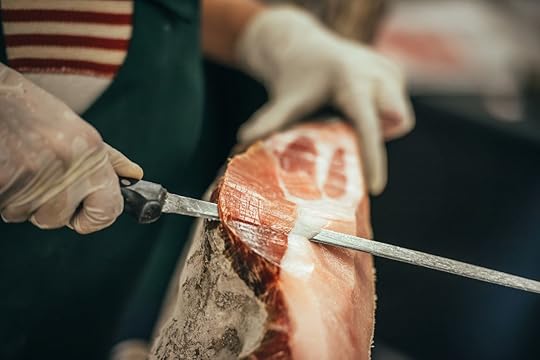
Photo: Yulia Grigoryeva/Shutterstock
Commonly mispronounced as: pros-uh-toh/pros-key-utto/pro-schoot
Correct pronunciation:proh-shoot-toh
Prosciutto is a dry-cured Italian ham. The most coveted version is Prosciutto di Parma. Italians have been eating prosciutto since the days of the Roman Empire. Back then, as now, Italian farmers were especially adept at curing meats, and raised entire herds of pig solely for prosciutto. Prosciutto di Parma must be made in certain regions of Italy, including Emilia-Romagna, Lombardy, and Piedmont. The cured meat is made from the hind legs of a pig that are rubbed in salt, washed, fried, and left to age anywhere from 10 months to two years. It is a favorite antipasto ingredient, appearing frequently in salad and on bruschetta.
15. Rooibos

Photo: A. Mertens/Shutterstock
Commonly mispronounced as: roo-boss
Correct pronunciation: roy-biss
The rooibos plant is native to South Africa, and is most popular as an herb for black tea. Though native South Africans have long drank tea from the rooibos plant, Europeans didn’t discover it until the late 1700s. Dutch settlers drank it as a cheaper alternative to the imported traditional black tea. Rooibos wasn’t massed produced until around 1948, however. In South Africa its known as bush tea, and in England as redbush tea. The deep, rich red tea is sometimes compared to hibiscus, with an earthy taste. It is a gentler, smoother alternative to other stronger caffeinated black teas.
16. Sherbet

Photo: Chokniti Khongchum/Shutterstock
Commonly mispronounced as: shur-burt
Correct pronunciation: shur-bit
Sherbet is not to be confused with sorbet. Sorbet (pronounced “sor-bey”) is a frozen dessert made with fruit and ice (similar to an Italian ice). Sherbert, on the other hand, adds a little milk or cream to give it a richer flavor. While it might be easy to confuse sherbet with ice cream, there is one crucial difference: By law, sherbert must less than 2 percent fat, so it’s not quite as creamy as traditional ice cream.
17. Skyr

Photo: defotoberg/Shutterstock
Commonly mispronounced as: sky-eer
Correct pronunciation: skee-er
Skyr is an Icelandic dairy product with a texture similar to Greek yogurt and a sweeter, less tangy taste. Despite its appearance, Skyr is technically a cheese. Skyr is mentioned in Icelandic literature dating back to the 17th century, and it’s at least 1,000 years old. Vikings often brought it along with them on long journeys. Skyr is protein rich and naturally low in sugar, and is gaining popularity in the United States, where it’s sold alongside traditional yogurt. In Iceland, it’s often eaten with a splash of milk and topped with fruit.
18. Tzatziki

Photo: New Africa/Shutterstock
Commonly mispronounced as: zat-zee-key/tat-zee-key
Correct pronunciation: tsah-see-key (or Greek: cha-chiki)
This creamy, tart sauce is popular in Greece and the Middle East. It’s made with salted yogurt mixed with cucumber, garlic, salt, and olive oil. Sometimes lemon juice, dill, mint, or parsley are added as well. Tzatziki probably first emerged during the Ottoman Empire, when the Persians, inspired by Indian raita, wanted a sauce to cut through spicy foods. Tzatziki is a popular dipping sauce for vegetables and gyros. In Greece, tzatziki is often served alongside meat dishes with pita bread.
19. Vichyssoise

Photo: PiraPora/Shutterstock
Commonly mispronounced as: vee-chi-so-isse
Correct pronunciation: vi-shee-swaz
This thick potato- and leek-based soup has a contentious origin story. Julia Child credited the Americans with inventing vichyssoise, and French chef Louis Diat, who ran the kitchen at the Ritz in New York City in the early 1950s, is often considered the original creator of vichyssoise. However, a recipe for potage parmentier, which could be an early precursor to vichyssoise, shows up in French cookbooks written after the Seven Year War ended in 1756 during a famine. One thing is certain: True vichyssoise must be served cold. Why cold? One legend contends that King Louis XV (who reigned from 1714 to 1774) was afraid of being poisoned and he insisted that so many servants taste test his potato soup that it grew cold before it reached him.
20. Worcestershire
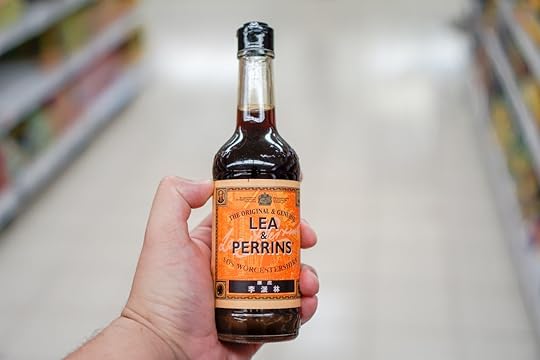
Photo: Mohd Syis Zulkipli/Shutterstock
Commonly mispronounced as: wors-turh-shire
Correct pronunciation: woos-turh-shur/woos-turh-sheer
This fermented sauce is named for the English town where it was created in the 19th century, Worcester. Known for its distinct umami flavor, Worcestershire is commonly used on steaks and burgers, as well as to dress salads. A drop of Worcestershire is sometimes used in Bloody Marys, and a cult hangover cure called the Prairie Oyster is made with a mix of raw egg and Worcestershire. The company Lea & Perrins famously first commercialized the production of Worcestershire in 1837. The original recipe included vinegar, molasses, anchovies, garlic, and pickles. 

More like this: You’ve been totally screwing up the pronunciation of these places
The post 20 foods you’re probably (definitely) mispronouncing appeared first on Matador Network.

Delta Air Lines website scam

It probably goes without saying that before you book a flight, you should actually be certain you’re booking with the actual airline. But with scammers getting more and more sophisticated, it has become increasingly difficult to distinguish the real deal from fakes. One Michigan family, for example, nearly lost $300 when trying to rebook a flight to Japan on a website posing as Delta’s. Naomi Poel and husband Hunter Pulaski were planning a trip with their 2-year-old daughter to visit family in Japan, when they were notified the day of their flight of a delay.
Panicking that they might miss their connecting flight, the family scrambled to find a solution, and stumbled across a website purporting to be linked to Delta.
As reported by USA Today, Laura Blankenship, director of marketing for the Better Business Bureau serving Eastern Michigan, said, “You have to be very careful when clicking online advertisements. It’s very easy for a scammer to impersonate a legitimate business. Instead of clicking the link, go to the business directly to purchase tickets.” On its official website, Delta cautioned against using third-party services, as that can expose you to frauds.
By showing up at the Delta counter at the airport, Poel found out that the website they used was a third-party company and got the $300 service fee that was on her credit card back.
When booking tickets online, look carefully at any details that may look out of place, as well as at the URL — a few extra minutes looking at fine prints, for example, can prevent vacation disasters. 

More like this: These are the most trusted airlines in the world
The post Family nearly loses $300 to scam website posing as Delta appeared first on Matador Network.

Oogie Boogie Bash Disneyland

Fans of The Nightmare Before Christmas will want to mark their calendars for September 17. Disney California Adventure will be hosting the Oogie Boogie Bash, a Halloween party with a Tim Burton-esque dose of macabre. The bash is intended for all ages, costumes are encouraged, and yes, booze will be sold.
Guests will be able to enjoy “Mickey’s Trick or Treat,” a Halloween show featuring Mickey and his pals, as well as a “DescenDANCE Party” based on the Descendants movie trilogy. Each night of the bash will also feature “Treat Trails,” where guests can collect bags full of candy to bring home. Among the most exciting new additions to the festivities is the “Villainous!” performance, full of lasers, projections, and lightning. Of course, there’ll also be a Halloween parade with Mickey, his pals, and Disney villains, as well as character encounters throughout the park.
The Oogie Boogie Bash will be running for over a month, on select nights between September 17 and October 31. Separate park admission is required, with tickets costing between $110 and $145 per person. 

More like this: Where to travel according to your favorite Disney Princess
The post Disneyland is having an ‘Oogie Boogie Bash’ this Halloween appeared first on Matador Network.

Workers would trade salary for PTO

If you wish you had more than just two weeks of paid time off (PTO), and are ready to take a pay cut if it means you can take a vacation whenever you want, you’re not alone. According to Allianz Partners’ 2019 Vacation Confidence Index, which surveyed 1,005 workers online, the average worker is willing to give up 26 percent of their salary in exchange for unlimited time off.
However, as reported by CNBC, an found that workers at companies with unlimited PTO only took an average of 13 days of vacation per year while employees at companies with traditional PTO schemes spent an average of 15 days on vacation.
This skepticism on the policy’s effectiveness, however, hasn’t stopped companies around the world from experimenting with increasing time off for their employees. Accounting firm Ernst & Young, for example, gives its Australian employees six to 12 weeks of “life leave” every year to travel, work part-time, or just relax — unpaid. Since April, the company has also introduced two new work schedule options. Term-time working will allow employees to work full-time during the school year, with all school holidays off (for those with children), or work part-time for three months. 

More like this: This Australian company gives employees 12 weeks of ‘life leave’ every year
The post One third of surveyed workers say they would trade part of their salary for unlimited time off appeared first on Matador Network.

Greenland loses ice

Thursday, August 1, 2019, was one of the worst days in history for the Greenland ice sheet. It set a record for single-day volume loss, with an estimated 12.5 billion tons of ice melting and pouring into the ocean, reported Smithsonian.
Combining the melting events of Wednesday, July 31 and Thursday, August 1, Martin Stendel, climate scientist at the Danish Meteorological Institute, explained on Twitter that the amount of ice melted would enough to cover the entire state of Florida in nearly five inches of water. It’s the biggest melt that has occured since scientists began tracking data in 1950.
This summer’s extreme melting has been caused by the same weather system responsible for Europe’s intense July heat wave. The system caused Greeland’s temperatures to rise 15 to 30 degrees above average, transforming the usually pure-white ice sheet into a gray stretch of land, allowing it to absorb more heat and melt faster.
According to National Geographic, Greenland’s melting ice could pour “between about 2 to 13 inches of extra water into the seas by 2100.” 

More like this: You need to see these glaciers before they’re gone
The post Greenland just lost 12.5 billion tons of ice in one day appeared first on Matador Network.

Vegan fast food

It’s about time fast-food establishments started offering some animal-free options because — newsflash! — vegans like junk food, too.
This past spring, Burger King announced via Facebook that Impossible Whoppers would be offered across the United States by the end of 2019. Its traditional beef patty will be replaced by the famous Impossible Burger, which is made of soybeans that mimic the texture of meat. The US certainly isn’t the first country to dabble into the budding vegan fast-food trend. Australia, the UK, Scandinavia, and Canada have all been catering to herbivore customers for years.
So, fuel your travels abroad with soy nuggets, veggie burgers, meatless breakfast sandwiches, and more. Here are eight vegan fast-food items from around the world that even a meat lover would devour.
1. Jackfruit pizza — Pizza Hut UK
View this post on InstagramA post shared by Pizza Hut UK (@pizzahutuk) on Jul 6, 2019 at 11:10am PDT
Pizza Huts in the UK kicked off 2019 by offering a dairy-free pizza with barbecue jackfruit. It started with a month-long trial in celebration of “Veganuary,” but it was so wildly popular that it quickly became a permanent fixture on the menu. The pie is baked with award-winning Violife cheese and topped with sweetcorn, onions, peppers, and jackfruit, which has a flavor akin to pulled pork.
2. Beyond Meat sandwiches — Tim Hortons Canada
View this post on InstagramA post shared by vegan around the world (@veggeats) on Jul 6, 2019 at 12:16pm PDT
As of this May, the Canadian chain that has also become an American staple is offering vegan sausage sandwiches in its homeland. There are burgers, sandwiched between lettuce, tomato, and a bun, as well as breakfast options, with the choice to switch the bun for a biscuit or have it in a wrap. A meatless breakfast doesn’t have to mean oatmeal and fruit, at least not up north.
3. Meatless McNuggets — McDonald’s Norway
View this post on InstagramA post shared by Dom Read (@domread) on Apr 4, 2019 at 4:38am PDT
McDonald’s Chicken McNuggets have never had a reputation for being quality (almost 10 years ago, people discovered that they contained ingredients from a dozen different countries). Norway’s vegan reboot of McNuggets, however, could be considered healthy. These chicken-free bites are made of mashed potatoes, chickpeas, onions, carrots, and corn-fried in a coating of crispy breadcrumbs.
4. Vegan mac and cheese — Starbucks UK
View this post on InstagramA post shared by Sarah (@spellbindingnails) on Mar 26, 2019 at 10:35am PDT
You don’t have to be dairy-free to enjoy Starbucks’ new Vegan Mac in select locations around the UK. After all, this vegan comfort food is the only “hot lunch” the coffee company offers (that’s right, no real mac and cheese in sight). The sauce is made of butternut squash, spinach, and parsley, so you can pretty much count it as a vegetable, right?
5. Fake steak subs — Subway Finland
View this post on Instagram
August 5, 2019
United Kingdom butterfly boom

The UK is about to experience a butterfly boom thanks to this summer’s heat wave. As reported by The Guardian, experts predict that high temperatures in July and projected above-average August temperatures will lead to a surge in the common blue butterfly. The number of common blue butterflies increased by 104 percent from summer 2017 to summer 2018.
You’ll recognize the common blue butterfly by its wings. Males have bright blue, unmarked wings, while females have orange crescents and dark spots near the edge of their purple or dark brown wings.

Photo: Gertjan Hooijer/Lioneska
Butterfly Conservation is encouraging people to help monitor all butterflies — there are 59 species of butterflies in the UK, the the common blue being the most common — by participating in the Big Butterfly Count population survey, which runs until August 11. 

More like this: The 7 most fascinating flowers around the world you need to see in person
The post The UK is about to experience a butterfly boom appeared first on Matador Network.

Matador Network's Blog
- Matador Network's profile
- 6 followers



